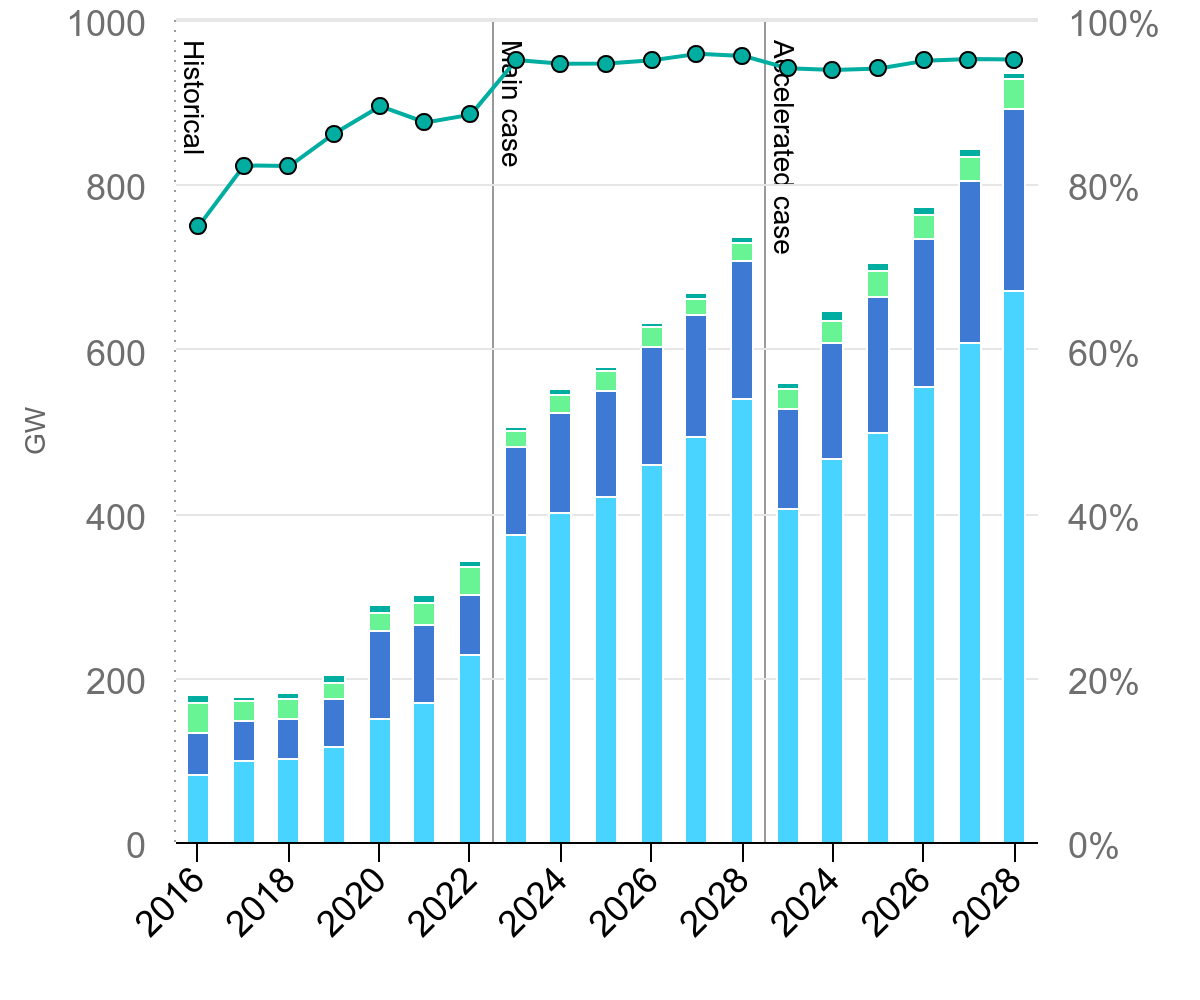Solar PV and wind additions are forecast to more than double by 2028 compared with 2022, continuously breaking records over the forecast period to reach almost 710 GW.
“This is unstoppable,” Heymi Bahar, a senior energy analyst at the International Energy Agency (IEA).
Writing for The Atlantic, Zoë Schlanger‘s article, “Cheap Solar Panels are Changing The World” details the extraordinary growth of solar power globally:
“The advantages of solar speak for themselves. Solar can be built faster and with fewer permits than other forms of energy infrastructure, mostly because the panels are flat and modular (unlike, say, a towering wind turbine or a hulking gas-fired power plant). It’s also adaptable at any scale, from an individual erecting a single panel to a utility company assembling a solar farm. And now, thanks to remarkable drops in prices for solar panels, mainly from China, simple market forces seem to be driving an all-out solar boom.”
Energy analyst Ember estimates that, “at the current rate of additions, the world will install 593 GW of solar panels this year. That’s 29% more than was installed last year, maintaining strong growth even after an estimated 87% surge in 2023. In 2024, an estimated 292 GW of solar capacity was installed by the end of July.”
Schlanger writes that in the U.S., “solar accounted for more than half of all new power last year. But the most dramatic growth is happening overseas. The latest global report from the International Energy Agency (IEA) notes that solar is on track to overtake all other forms of energy by 2033.”
Driving this growth is the relentless reduction in the cost of solar power. According to Wood MacKenzie the levelised cost of electricity (LCOE) of solar PV has continued to decrease globally in 2024. “Across regions, the cost competitiveness of these technologies shows significant variation, but overall, renewables are on a steady path towards outcompeting traditional fossil fuel sources,” said Amhed Jameel Abdullah, senior research analyst at Wood Mackenzie.
“In 2024, North American LCOE dropped by 4.6% due to a 4.2% decrease in capital costs; meanwhile, Latin America’s average LCOE dropped by 8%, driven by easing supply chain pressures and falling capital costs. Finally, in the Middle East and Africa, the average LCOE dropped by 13% in 2024. This was driven by the stabilization of supply chains, while putting solar PV as the most cost-effective energy source for the region.” [PV Tech, Solar LCOE continues to decrease globally – Wood Mackenzie]
Schlanger adds that last year at the United Nations Climate Change Conference, or COP28, in Dubai, “132 countries and the European Union pledged to triple the world’s renewable-energy capacity by 2030. According to Bahar, it’s the only promise of the many made in Dubai that’s likely to even be close to fulfilled: The world is on track to add 2.7 times its renewable capacity by then, and 80 percent of that increase will come from solar.”









